- Strelitzia: The Ultimate Guide to Care for Different Species at Home
- Introduction
- Choosing the Right Species for Your Home
- Lighting Requirements
- Watering and Humidity
- Temperature and Environment
- Soil and Fertilizer
- Pruning and Maintenance
- Potting and Repotting
- Common Pests and Diseases
- Conclusion
- Tips for Proper Lighting and Temperature
- Lighting:
- Temperature:
- Choosing the Right Soil and Pot for Your Strelitzia
- Soil
- Pot
- Watering and Humidity: Dos and Don’ts
- Watering Dos:
- Watering Don’ts:
- Humidity Dos:
- Humidity Don’ts:
- Pruning and Trimming: How to Maintain the Perfect Shape
- 1. Timing
- 2. Tools
- 3. Removing Dead or Damaged Leaves
- 4. Trimming Brown Tips
- 5. Controlling Size
- 6. Removing Suckers
- 7. Cleaning and Disinfecting
- 8. Fertilizing and Watering
- Fertilizing: Best Practices for Healthy Growth
- Choosing the Right Fertilizer
- When to Fertilize
- How to Fertilize
- Additional Tips
- Conclusion
- Pest and Disease Prevention: Keeping Your Strelitzia Safe
- 1. Preventing Common Pests
- 2. Avoiding Diseases
- 3. Regular Care and Maintenance
- Propagation Techniques: Growing Your Strelitzia Family
- 1. Division
- 2. Seeds
- 3. Rhizome Cuttings
- 4. Offsets
- 5. Tissue Culture
- Decorating with Strelitzia: Creative Ideas for Indoor and Outdoor Spaces
- Indoor Decor
- Outdoor Décor
- Q&A:
- How much sunlight does Strelitzia need?
- How often should I water Strelitzia?
- What kind of fertilizer should I use for Strelitzia?
- How do I propagate Strelitzia?
- What are the different species of Strelitzia?
- Can Strelitzia be grown outdoors?
- Video: Bird Of Paradise Care | Repotting + Watering + Tips
Strelitzia, commonly known as the Bird of Paradise plant, is a stunning tropical plant that can add a touch of exotic beauty to any indoor space. With its large, vibrant flowers and elegant foliage, Strelitzia is a popular choice among plant enthusiasts.
In this article, we will explore some useful tips and tricks for successfully caring for Strelitzia plants at home. We will also delve into the various species of Strelitzia and their unique characteristics.
Caring for Strelitzia plants: Strelitzia plants require bright indirect light, so it’s best to place them near a window where they can receive plenty of sunlight. They also prefer well-draining soil and a humid environment, so be sure to water them regularly and provide occasional misting. Additionally, Strelitzia plants benefit from regular fertilization during the growing season to promote healthy growth and vibrant blooms.
Different species of Strelitzia: There are several species of Strelitzia, each with its own distinct features. The most common species is Strelitzia reginae, known for its orange and blue flowers that resemble a bird in flight. Another popular species is Strelitzia nicolai, also known as White Bird of Paradise, which has larger foliage and white flowers. Strelitzia juncea, or Narrow-Leafed Bird of Paradise, has thin, reed-like leaves and striking orange flowers. Each species has its own specific care requirements, so it’s important to research and understand the needs of your particular Strelitzia plant.
Tip: To encourage blooming in Strelitzia plants, be patient as it can take a few years for them to mature enough to produce flowers. In the meantime, focus on providing the proper care and conditions for your plant to thrive.
With their vibrant colors and unique foliage, Strelitzia plants can be a stunning addition to any home. By following these care tips and understanding the different species, you can cultivate a healthy and flourishing Strelitzia plant that will bring joy and beauty to your space for years to come.
Strelitzia: The Ultimate Guide to Care for Different Species at Home
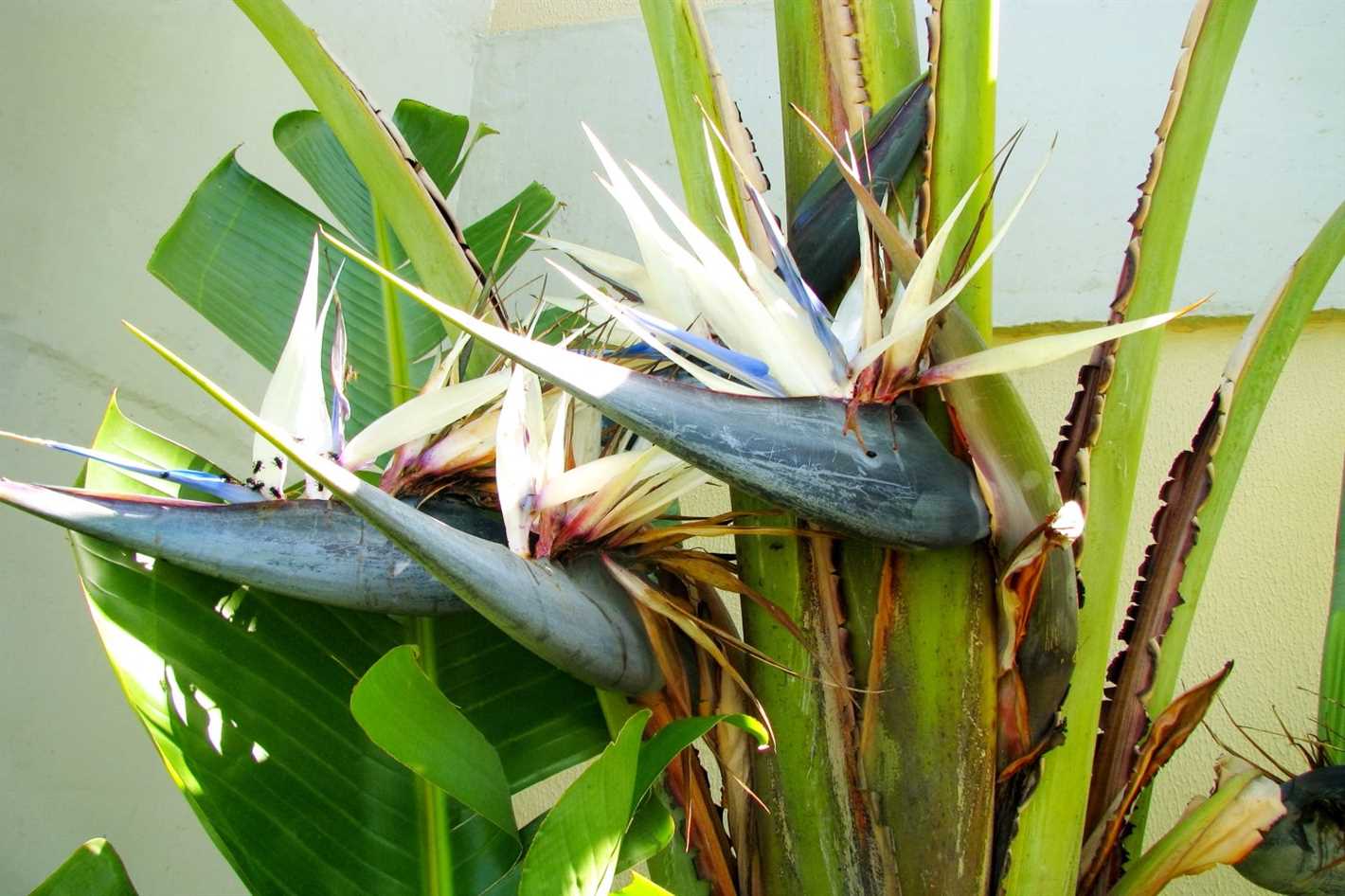
Introduction
Welcome to the ultimate guide to care for different species of Strelitzia plants at home. Strelitzia, also known as the Bird of Paradise, is a stunning tropical plant that adds a touch of exotic beauty to any indoor or outdoor space. In this guide, we will provide you with essential tips and tricks for successfully growing and caring for Strelitzia plants of various species.
Choosing the Right Species for Your Home
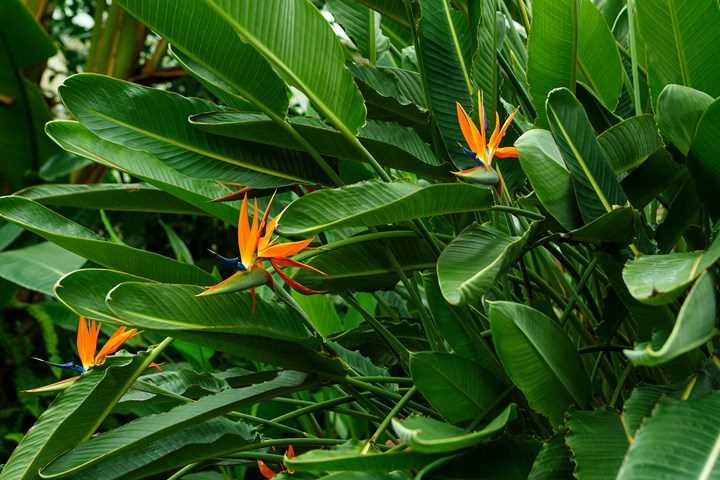
Strelitzia plants come in different species, each with its unique characteristics and requirements. Before bringing a Strelitzia plant home, it’s important to research and select the species that is best suited for your home environment. Some popular species include:
- Strelitzia reginae
- Strelitzia nicolai
- Strelitzia juncea
Lighting Requirements
Most Strelitzia species thrive in bright, indirect light. Place your plant near a window that receives partial sunlight or provide filtered light through sheer curtains or blinds. Avoid exposing your Strelitzia plant to direct sunlight, as it can scorch the leaves.
Watering and Humidity
Strelitzia plants prefer to be kept slightly moist but not overly saturated. Water your plant thoroughly when the top inch of soil feels dry. Be sure to allow excess water to drain away to prevent root rot. Maintaining a moderate level of humidity around your Strelitzia plant is also important. Mist the leaves regularly or use a pebble tray to increase humidity.
Temperature and Environment
Strelitzia plants thrive in warm temperatures between 65-85°F (18-29°C). Keep your plant away from drafts or extreme temperature fluctuations. Maintain a stable environment to ensure the health and growth of your Strelitzia plant.
Soil and Fertilizer
Strelitzia plants require well-draining soil to prevent waterlogging. A mix of potting soil, sand, and peat moss is ideal for these plants. Fertilize your Strelitzia plant with a balanced liquid fertilizer once a month during the growing season to promote healthy growth.
Pruning and Maintenance
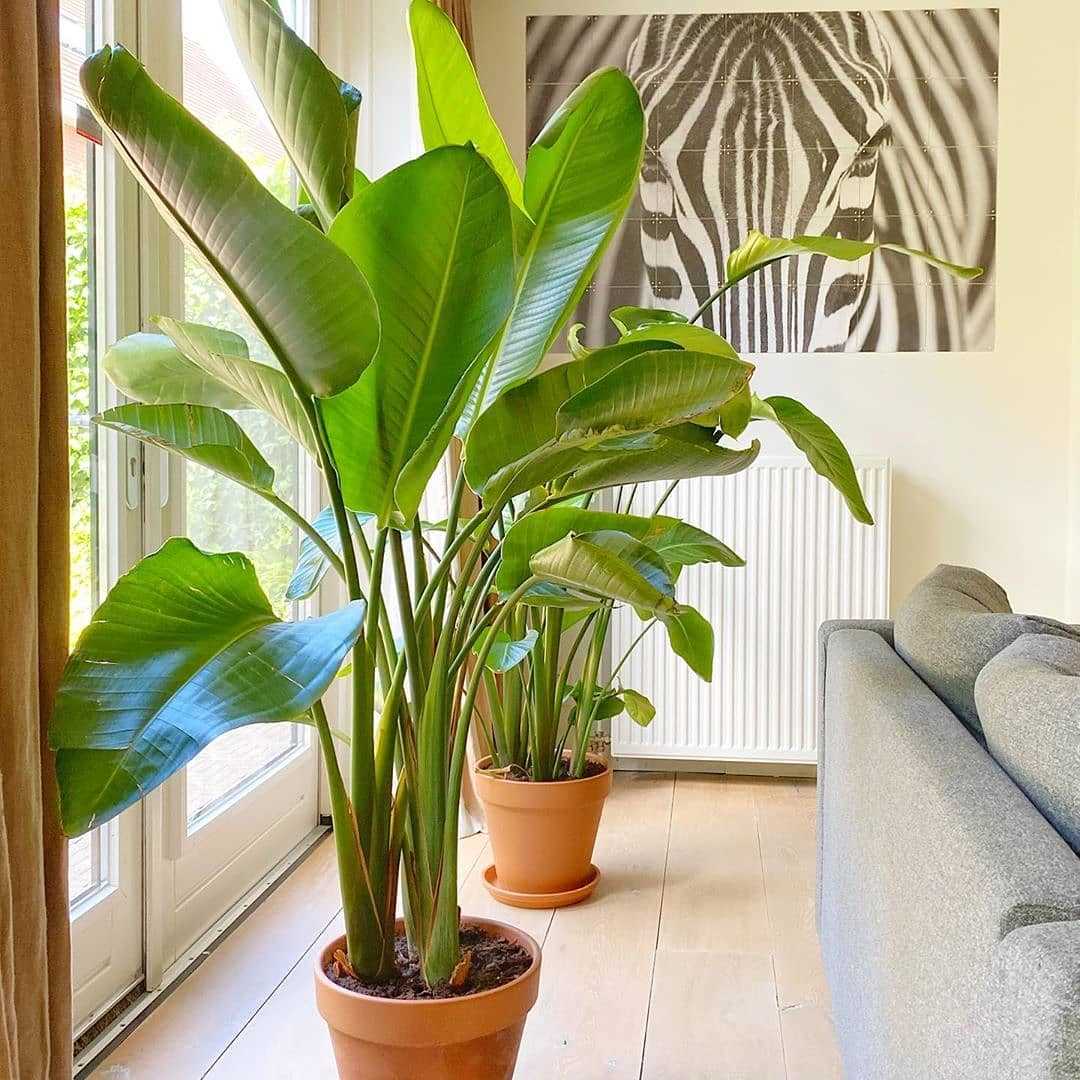
Regular pruning is essential to maintain the shape and health of your Strelitzia plant. Remove any dead or damaged leaves and trim back any excessive growth. Pruning should be done during the spring or summer months when the plant is actively growing.
Potting and Repotting
Strelitzia plants prefer to be slightly root-bound, so they do not need frequent repotting. Repot your Strelitzia only when the roots have filled the current pot and are visibly coming out of the drainage holes. Use a larger pot with fresh potting soil to accommodate the growing plant.
Common Pests and Diseases
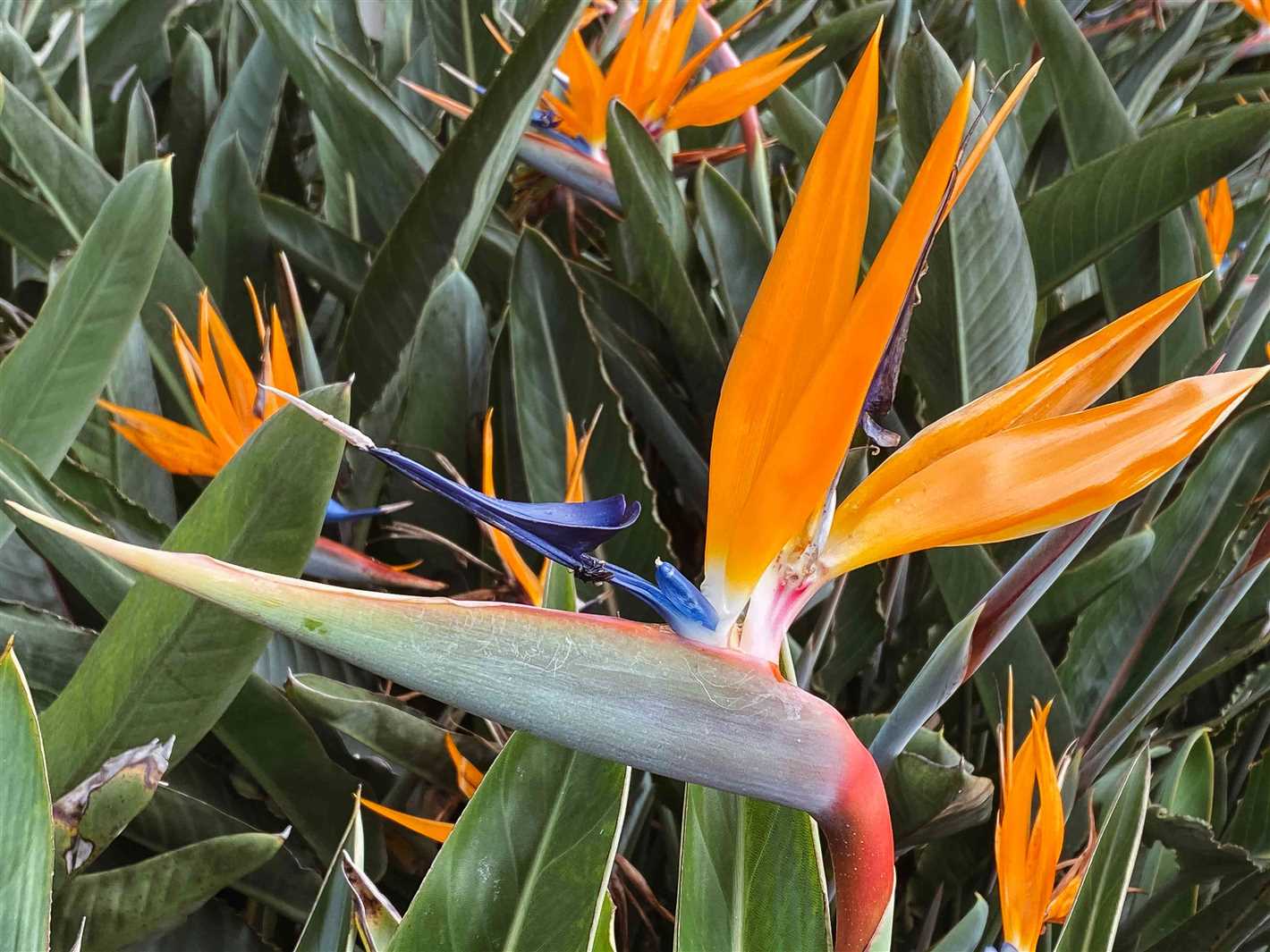
Strelitzia plants are generally resistant to pests and diseases. However, they can occasionally be affected by mealybugs, spider mites, and fungal infections. Regularly inspect your plant for any signs of pests or diseases and take appropriate measures to treat them.
Conclusion
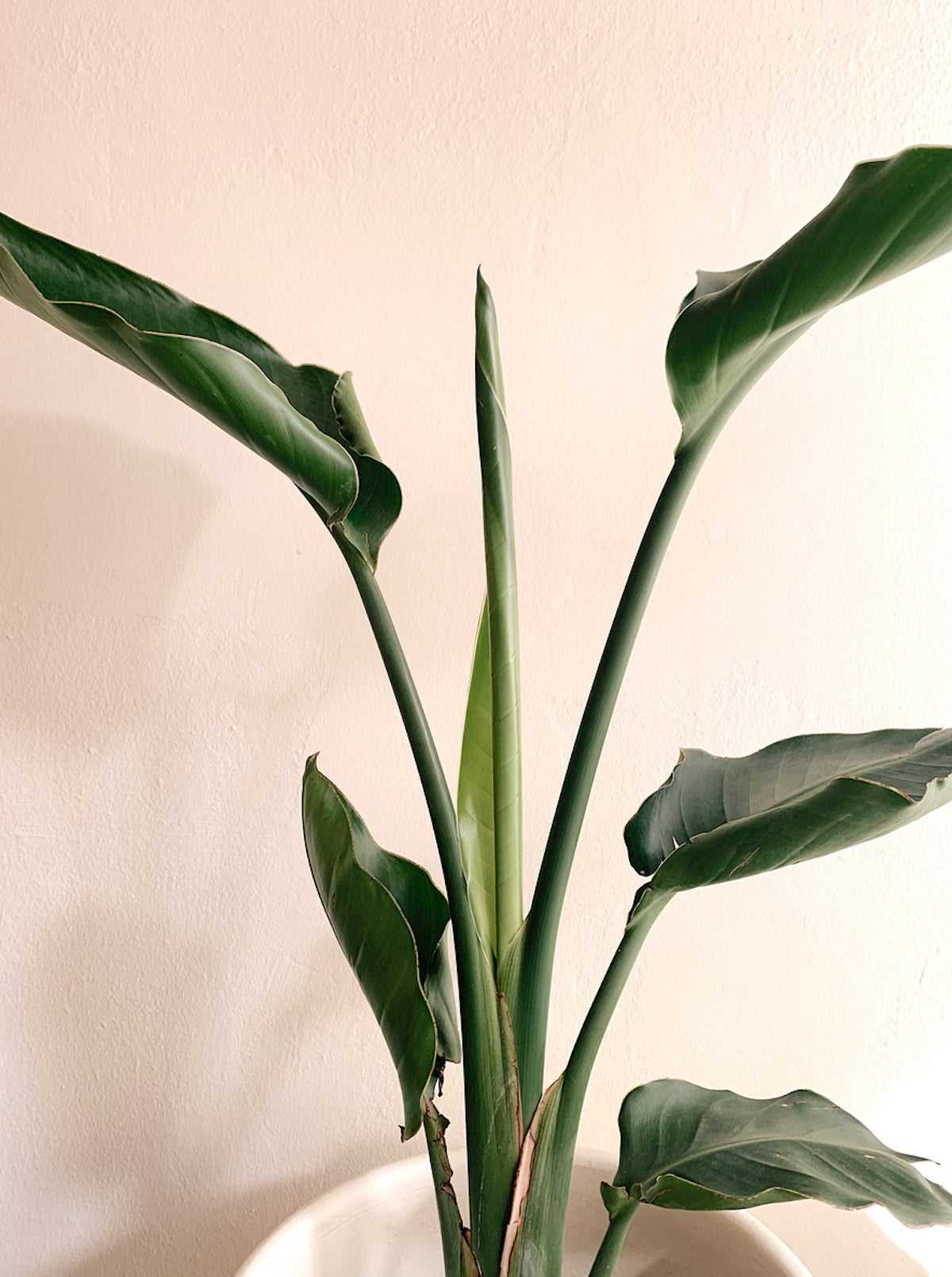
Caring for Strelitzia plants of different species can be a rewarding experience that brings a touch of tropical elegance to your home. By following the tips and tricks shared in this guide, you can create the perfect environment for your Strelitzia and enjoy its vibrant and exotic beauty for years to come.
Disclaimer: The information provided in this guide is for general informational purposes only and should not be considered as professional advice. Always consult with a horticulturist or gardening expert for specific care instructions for your Strelitzia plants.
Tips for Proper Lighting and Temperature
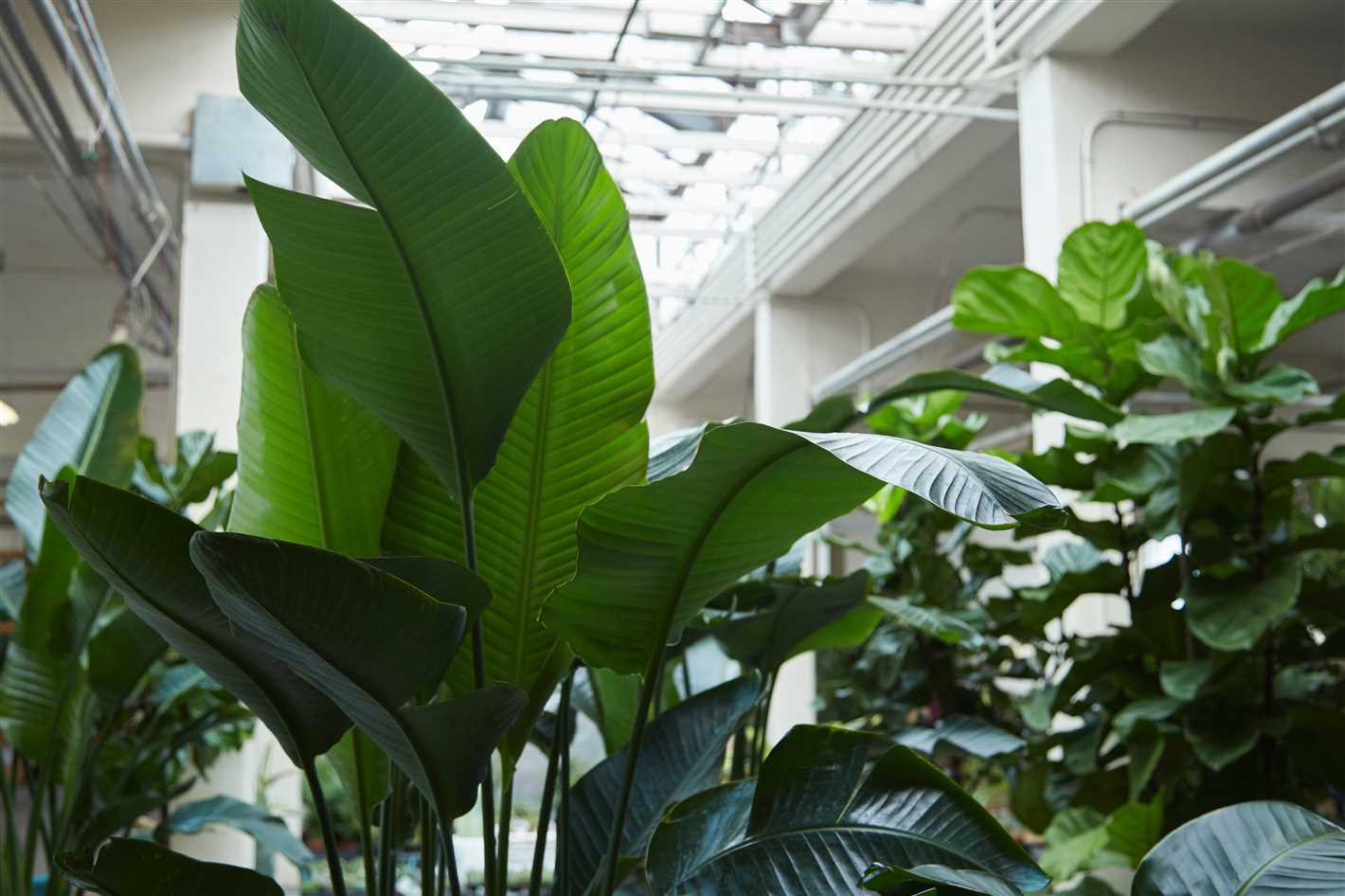
Lighting:
- Place your Strelitzia in a location with bright, indirect light. It thrives best in full sun or bright, filtered light.
- Avoid placing your plant in direct sunlight, as it can scorch the leaves.
- If you don’t have access to natural light, you can use artificial grow lights. Place the lights about 6-12 inches above the plant and keep them on for 12-16 hours a day.
- Rotate your Strelitzia regularly to promote even growth and prevent leaning towards the light source.
Temperature:
- Strelitzia prefers warm temperatures, ideally between 65-80°F (18-27°C) during the day.
- Avoid exposing your plant to temperatures below 50°F (10°C), as it can cause damage to the leaves and overall health of the plant.
- Keep your Strelitzia away from drafts or cold windows, as sudden temperature changes can stress the plant.
- In case of extreme heat, provide some shade or move the plant to a cooler spot to prevent overheating.
By providing the right lighting and temperature conditions, you can ensure that your Strelitzia thrives and stays healthy. Remember to monitor the conditions regularly and make adjustments as needed.
Choosing the Right Soil and Pot for Your Strelitzia
Proper soil and pot selection are crucial for the health and well-being of your Strelitzia plant. Here are some tips to guide you in making the right choices:
Soil
Strelitzias prefer well-draining soil that retains some moisture but does not become waterlogged. A good mix for Strelitzia includes a combination of organic matter, such as peat moss or coconut coir, and a coarse material like perlite or sand. This ensures proper drainage while also providing nutrients and moisture retention.
It is important to note that Strelitzias are sensitive to salt buildup in the soil, so avoid using soil mixes that have a high salt content. Regularly flushing the soil with water or using a fertilizer specifically formulated for Strelitzias can help prevent salt buildup.
Pot
When selecting a pot for your Strelitzia, opt for one that has drainage holes at the bottom. This allows excess water to escape and prevents waterlogging, which can lead to root rot. A pot made of clay or terracotta is a good choice as it allows for better airflow and helps the soil dry out more quickly.
Choose a pot that is slightly larger than the current root ball of your Strelitzia, leaving some room for growth. Avoid pots that are too large, as an excessive amount of soil can retain too much moisture and lead to overwatering.
Additionally, consider the overall aesthetics of the pot, as it should complement the beauty of your Strelitzia and the interior design of your space.
In summary, using a well-draining soil mix and a pot with drainage holes are essential for the proper care of your Strelitzia. By providing the right growing conditions, you can ensure the health and longevity of your plant.
Watering and Humidity: Dos and Don’ts
Watering and maintaining proper humidity levels are crucial for the health and well-being of Strelitzia plants. Here are some dos and don’ts to help you ensure the right watering and humidity conditions for your Strelitzia.
Watering Dos:
- Water your Strelitzia thoroughly until the water runs out of the drainage holes.
- Allow the top inch of the soil to dry out before watering again.
- Water more frequently during the summer months and reduce watering during the winter when the plant is dormant.
- Use room temperature water to avoid shocking the roots.
- Consider using rainwater or distilled water if your tap water contains high levels of minerals.
Watering Don’ts:
- Avoid overwatering your Strelitzia as it can lead to root rot and other moisture-related issues.
- Do not let the plant sit in standing water as it can promote fungal growth and root rot.
- Avoid underwatering as it can cause the leaves to turn brown and dry out.
Humidity Dos:
- Place your Strelitzia in a location with moderate to high humidity levels.
- Mist the leaves regularly with room temperature water to increase humidity.
- Grouping your Strelitzia with other plants can create a microclimate with higher humidity.
Humidity Don’ts:
- Avoid placing your Strelitzia near drafts or heating/cooling vents as it can cause low humidity levels.
- Do not place the plant close to direct heat sources like radiators or fireplaces.
- Avoid using humidifiers directly on the plant as it can lead to excess moisture on the leaves, promoting fungal diseases.
Following these watering and humidity dos and don’ts can help you create a favorable environment for your Strelitzia plants, ensuring their healthy growth and vibrant foliage.
Pruning and Trimming: How to Maintain the Perfect Shape
Pruning and trimming are essential tasks in maintaining the perfect shape of your Strelitzia plants. Regular pruning not only helps to control the size of the plant but also promotes healthier growth and more abundant flowering. Here are some tips on how to prune and trim your Strelitzia:
1. Timing
It is best to prune and trim your Strelitzia plants during the early spring or late winter when the plant is not actively growing. This will help to minimize stress on the plant and ensure optimal healing of the pruning wounds.
2. Tools
Make sure you have the right tools for the job. You will need a sharp pair of pruning shears or scissors to make clean cuts. It is also a good idea to have a pair of gardening gloves to protect your hands from thorns or sharp edges.
3. Removing Dead or Damaged Leaves
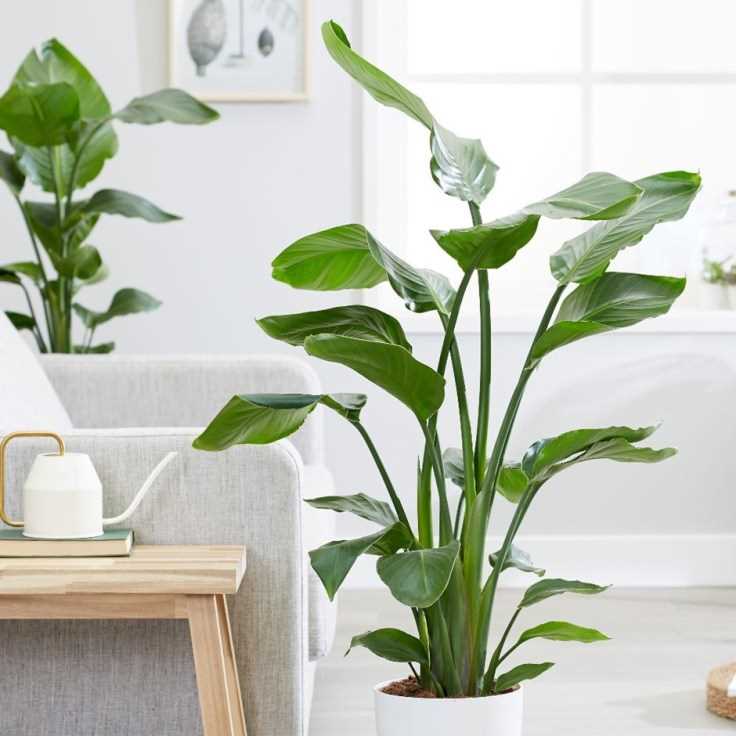
Start by removing any dead or damaged leaves. These leaves can be easily identified as they will be brown, yellow, or wilted. Use your pruning shears to cut the leaves close to the base of the plant, making sure not to damage any healthy growth.
4. Trimming Brown Tips
If you notice any brown tips on the leaves, you can trim them off to improve the appearance of the plant. Use your sharp scissors to carefully remove the brown tips, making sure not to cut too much of the leaf.
5. Controlling Size
If your Strelitzia plant is getting too large for its space, you can prune it to control its size. Identify the stems that are growing too tall or wide and use your pruning shears to cut them back to the desired size. Make sure to cut just above a leaf or node to encourage new growth.
6. Removing Suckers
Suckers are new shoots that grow from the base of the plant. If you want to maintain a single-stemmed plant, you will need to remove these suckers as they appear. Use your pruning shears to cut off the suckers flush with the base of the plant.
7. Cleaning and Disinfecting
After each pruning session, it is important to clean and disinfect your tools to prevent the spread of disease. Use a solution of one part bleach to nine parts water to disinfect your pruning shears or scissors.
8. Fertilizing and Watering
After pruning and trimming your Strelitzia, make sure to fertilize and water the plant to encourage new growth and recovery. Use a balanced, water-soluble fertilizer according to the manufacturer’s instructions and water the plant thoroughly.
By following these pruning and trimming tips, you can maintain the perfect shape of your Strelitzia plants and ensure their health and beauty for years to come.
Fertilizing: Best Practices for Healthy Growth
Choosing the Right Fertilizer
Choosing the right fertilizer is essential for the healthy growth of your Strelitzia plant. Look for a well-balanced fertilizer with a ratio of nitrogen (N), phosphorus (P), and potassium (K) such as 10-10-10 or 20-20-20. These ratios provide a good overall nutrient balance for the plant.
It’s also important to choose a fertilizer with micronutrients such as iron, magnesium, and zinc to ensure your Strelitzia gets all the essential minerals it needs.
When to Fertilize
Fertilize your Strelitzia during the growing season, which typically occurs from spring to early fall. Avoid fertilizing during the dormant period in winter, as the plant’s growth slows down during this time.
Generally, it’s recommended to fertilize once a month during the growing season. However, always follow the instructions on the fertilizer packaging as different products may have varying application rates.
How to Fertilize
Before applying fertilizer, make sure the soil is moist. Using dry fertilizer on dry soil can potentially damage the plant’s roots.
Spread the fertilizer evenly over the soil surface, avoiding direct contact with the plant’s leaves. Gently scratch the surface of the soil with a garden fork or your fingers to incorporate the fertilizer into the top layer of soil.
Water the plant thoroughly after fertilizing to help the nutrients penetrate the roots.
Additional Tips
- Never exceed the recommended dosage of fertilizer, as over-fertilization can burn the roots and harm the plant.
- Monitor your Strelitzia for signs of nutrient deficiencies, such as yellowing leaves or stunted growth. Adjust your fertilization practices accordingly.
- If using a slow-release fertilizer, apply it according to the manufacturer’s instructions and avoid overusing it.
- Regularly check the pH level of the soil to ensure it’s within the optimal range for Strelitzia plants, which is usually slightly acidic to neutral (pH 6.0-7.0).
Conclusion
Proper fertilization is crucial for the healthy growth and development of Strelitzia plants. Choose a well-balanced fertilizer with micronutrients, fertilize during the growing season, and follow the recommended dosage. Monitor your plant’s health and adjust your fertilization practices as needed. With proper care, your Strelitzia will thrive and display its beautiful blooms.
Pest and Disease Prevention: Keeping Your Strelitzia Safe
1. Preventing Common Pests
Strelitzia plants are susceptible to a few common pests that can cause damage to the leaves and flowers. Here are some tips to prevent these pests from infesting your plant:
- Aphids: Regularly inspect your strelitzia for aphids, small insects that can cluster on the undersides of leaves. Insecticidal soap or neem oil can help control aphid infestations.
- Mealybugs: These small, white, cotton-like insects can be found in the leaf axils and on the undersides of leaves. A cotton swab dipped in rubbing alcohol can be used to remove them. Neem oil can also be effective.
- Spider mites: These tiny pests can cause yellowing and stippling of leaves. Regularly misting your strelitzia can help prevent spider mite infestations. If an infestation occurs, use insecticidal soap or neem oil to control them.
2. Avoiding Diseases
While strelitzias are relatively disease-resistant, there are a few diseases you should be aware of and take steps to prevent:
- Fungal leaf spot: This disease can cause dark, water-soaked spots on the leaves. To prevent fungal leaf spot, avoid overhead watering and ensure good air circulation around the plant.
- Root rot: Overwatering or poorly-draining soil can lead to root rot in strelitzias. To prevent this, make sure the soil is well-drained and allow the top inch of soil to dry out before watering again.
- Viral diseases: Viral diseases can be spread by infected pruning tools or insects. To prevent viral diseases, regularly clean and sanitize pruning tools and inspect your plant for signs of insect damage.
3. Regular Care and Maintenance
In addition to pest and disease prevention, regular care and maintenance can help keep your strelitzia healthy:
- Provide adequate light: Strelitzias require bright, indirect light to thrive. Place your plant near a sunny window but avoid direct sunlight, as it can scorch the leaves.
- Water properly: Water your strelitzia when the top inch of soil feels dry. Avoid overwatering, as this can lead to root rot.
- Fertilize regularly: Feed your strelitzia with a balanced, water-soluble fertilizer during the growing season. Follow the instructions on the fertilizer package for application rates.
- Monitor for signs of stress: Regularly inspect your strelitzia for any signs of stress, such as yellowing leaves or wilting. Address any issues promptly to prevent further damage.
By following these tips and taking appropriate preventive measures, you can help ensure that your strelitzia remains healthy and free from pests and diseases.
Propagation Techniques: Growing Your Strelitzia Family
Strelitzias are beautiful and unique plants that can make a great addition to any home. If you want to expand your Strelitzia family, you may want to consider propagating them. There are several different techniques you can use to propagate Strelitzia plants, and we will explore them here.
1. Division
One of the easiest ways to propagate Strelitzias is through division. This method works well for mature plants that have developed multiple stems. Carefully remove the plant from its container and divide the clumps of stems, making sure each section has healthy roots attached. Replant the divided sections in separate pots and provide them with the same care as mature plants.
2. Seeds
If you want to start your Strelitzia family from scratch, you can use seeds. Collect the seeds from mature Strelitzia flowers and plant them in a well-draining potting mix. Keep the soil consistently moist, but not waterlogged, and provide the seeds with warmth and bright indirect light. Germination can take several weeks or even months, so be patient.
3. Rhizome Cuttings

Another method for propagating Strelitzias is through rhizome cuttings. Carefully remove a healthy rhizome from the parent plant and cut it into sections, making sure each section has at least one bud. Plant the cuttings in pots filled with well-draining soil and keep them moist. It is best to take rhizome cuttings in spring or early summer when the plants are actively growing.
4. Offsets
Strelitzias can produce offsets, which are small plants that appear at the base of the parent plant. Carefully separate the offsets from the parent plant, making sure they have roots attached. Plant them in separate containers filled with well-draining soil and provide them with the same care as mature plants. It may take a while for the offsets to establish themselves and start growing.
5. Tissue Culture
If you have the necessary equipment and expertise, you can also propagate Strelitzias through tissue culture. This method involves taking small tissue samples from the parent plant and placing them in a sterile nutrient-rich medium to encourage new plant growth. Tissue culture can be a complex and precise process, so it is best left to experienced plant propagators.
Propagation can be a rewarding way to grow your Strelitzia family and create new plants to share with friends and family. Whether you choose to divide the plant, grow from seeds, take rhizome cuttings, separate offsets, or try tissue culture, remember to provide the new plants with the necessary care and attention to help them thrive.
Decorating with Strelitzia: Creative Ideas for Indoor and Outdoor Spaces
Strelitzia, also known as Bird of Paradise, is a beautiful and exotic plant that can add a touch of tropical charm to any indoor or outdoor space. With its vibrant orange and blue flowers and lush green foliage, Strelitzia is a popular choice for both home and garden decor. Here are some creative ideas on how you can use Strelitzia to decorate your indoor and outdoor spaces.
Indoor Decor
1. Focal Point: Use Strelitzia as a focal point in your living room, hallway, or entryway. Place a large potted Strelitzia plant in a prominent spot where it can be the center of attention.
2. Corner Accent: If you have a bare corner in your room, a Strelitzia plant can be a perfect addition to fill the empty space. Choose a larger variety of Strelitzia to create a statement piece.
3. Tabletop Centerpiece: Arrange a few cut Strelitzia flowers in a vase and place it on your dining table or coffee table. The vibrant colors of the flowers will instantly liven up the space.
4. Hanging Plant: Consider hanging a Strelitzia plant from the ceiling or placing it in a hanging basket. This not only adds visual interest but also helps to maximize space in smaller rooms.
Outdoor Décor
1. Garden Feature: Plant Strelitzia in your garden as a striking feature plant. Its bold flowers and architectural leaves can create a tropical oasis in your outdoor space.
2. Poolside Accent: Place a few Strelitzia plants near your pool or patio area to add a touch of exotic charm. The vibrant flowers will create a stunning contrast against the blue water and green surroundings.
3. Potted Plant: Put Strelitzia in a large pot and place it on your deck, balcony, or porch. This allows you to easily move the plant around and create a versatile outdoor display.
4. Privacy Screen: Use Strelitzia to create a natural privacy screen in your outdoor space. Plant several Strelitzia plants in a row along a fence or wall to create a lush and vibrant barrier.
5. Tropical Garden: Create a tropical-themed garden by combining Strelitzia with other exotic plants like palm trees, orchids, and ferns. The combination of different textures and colors will create a stunning and unique outdoor oasis.
As you can see, Strelitzia is a versatile plant that can be used in various ways to enhance your indoor and outdoor spaces. Whether you choose to use it as a focal point, an accent piece, or in combination with other plants, Strelitzia will add a touch of beauty and elegance to any setting.
Q&A:
How much sunlight does Strelitzia need?
Strelitzia plants thrive in bright, indirect sunlight. They should not be exposed to direct sunlight for long periods of time as it can scorch their leaves. Placing the plant near a window with filtered light or providing it with bright artificial light is ideal.
How often should I water Strelitzia?
Strelitzia plants prefer to be consistently moist, but not waterlogged. Water the plant when the top inch of soil feels dry to the touch. Avoid overwatering as it can lead to root rot. It’s better to underwater than to overwater this plant.
What kind of fertilizer should I use for Strelitzia?
Strelitzia plants benefit from a balanced, slow-release fertilizer. A fertilizer with a ratio of 10-10-10 or similar should work well. Apply the fertilizer every few months during the growing season. Be sure to follow the instructions on the fertilizer packaging for proper application.
How do I propagate Strelitzia?
Strelitzia can be propagated through division or by collecting and sowing seeds. To propagate through division, carefully separate the plant into smaller sections, ensuring each section has some roots attached. Plant the divisions in separate pots and provide them with the same care as the parent plant. If propagating from seeds, collect the seeds from the plant when they are mature and sow them in a well-draining seed-starting mix. Keep the soil moist and warm, and the seeds should germinate within a few weeks.
What are the different species of Strelitzia?
There are several species of Strelitzia, including Strelitzia reginae (orange bird of paradise), Strelitzia nicolai (giant bird of paradise), Strelitzia juncea (narrow-leaved bird of paradise), and Strelitzia alba (white-flowered bird of paradise), among others. Each species has its own unique characteristics and care requirements.
Can Strelitzia be grown outdoors?
Yes, Strelitzia can be grown outdoors in suitable climates. They thrive in warm, tropical or subtropical regions where temperatures do not drop below freezing. Outdoor-grown Strelitzia plants can reach their full height potential and produce larger flowers. However, they still require protection from direct sunlight and strong winds.
Video:
Bird Of Paradise Care | Repotting + Watering + Tips







